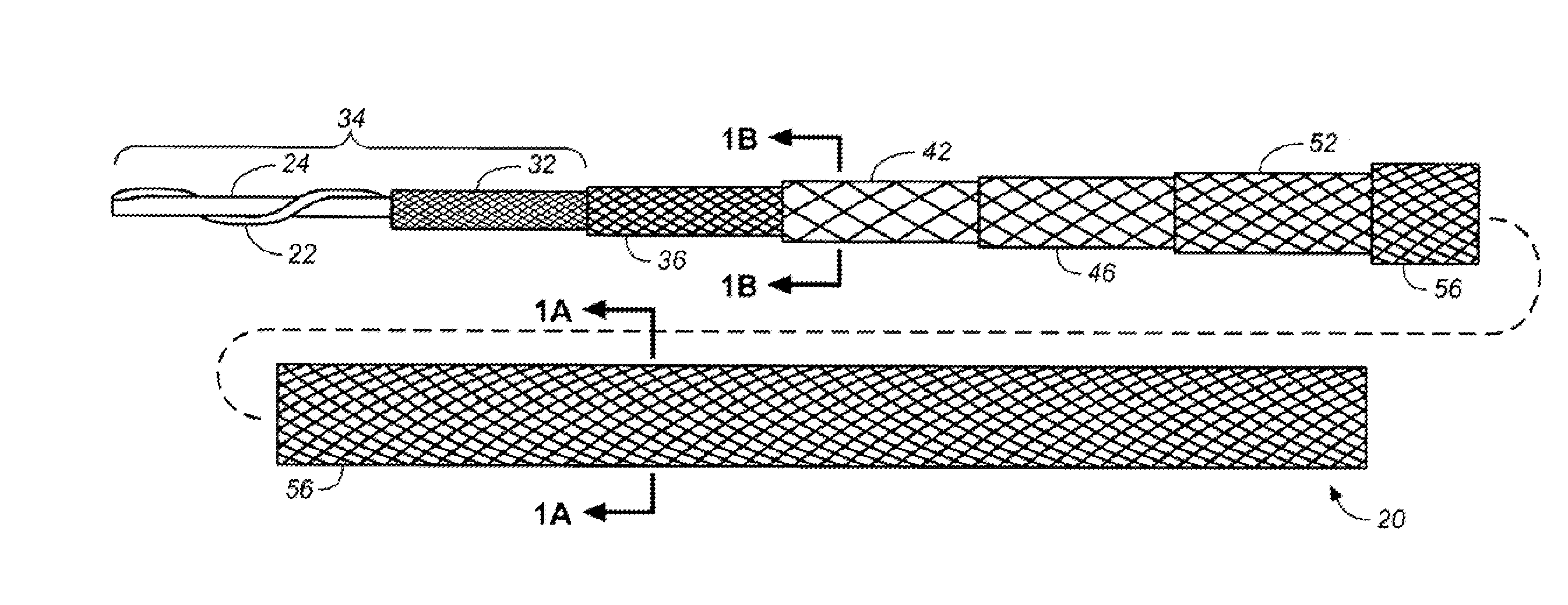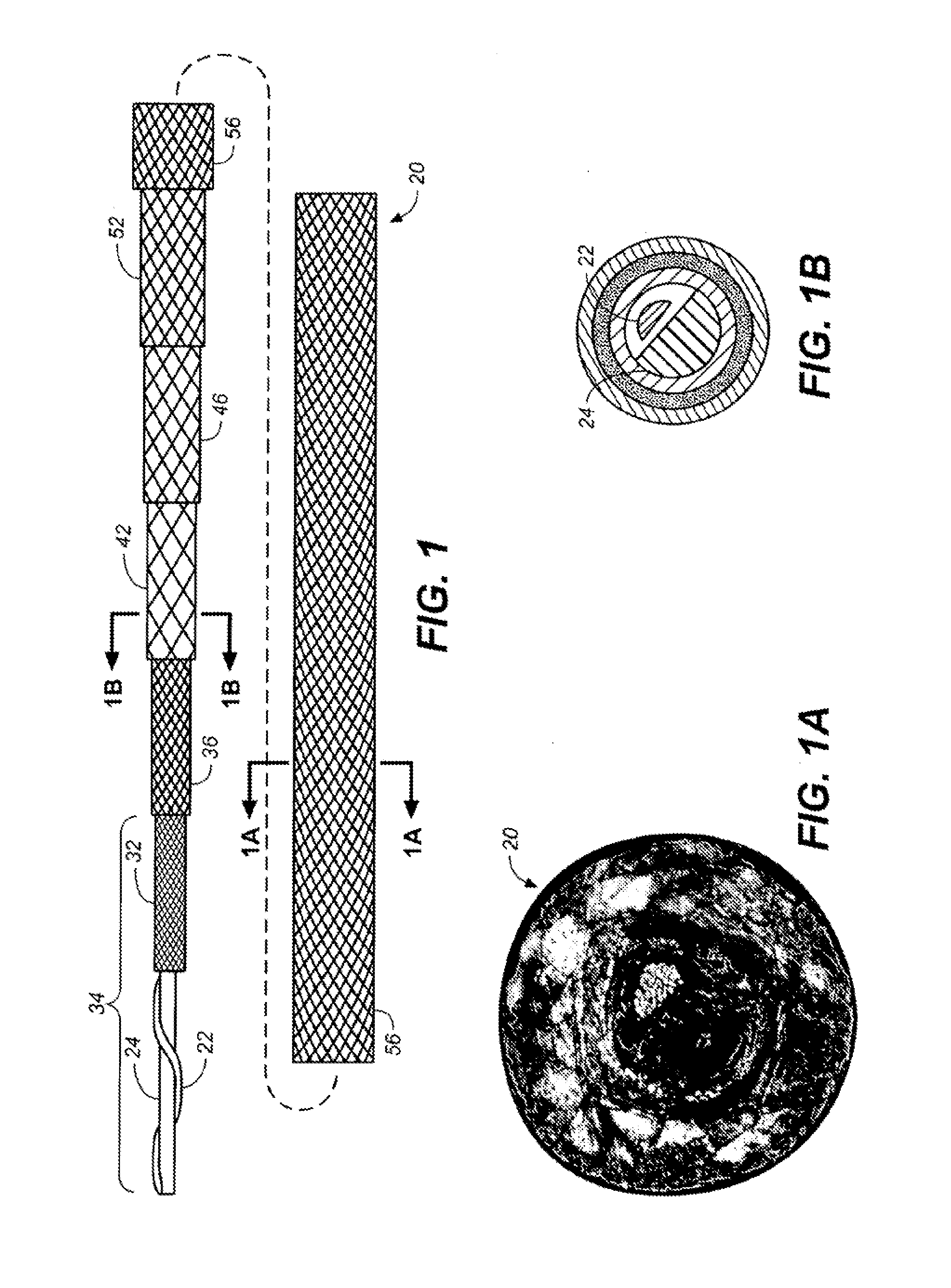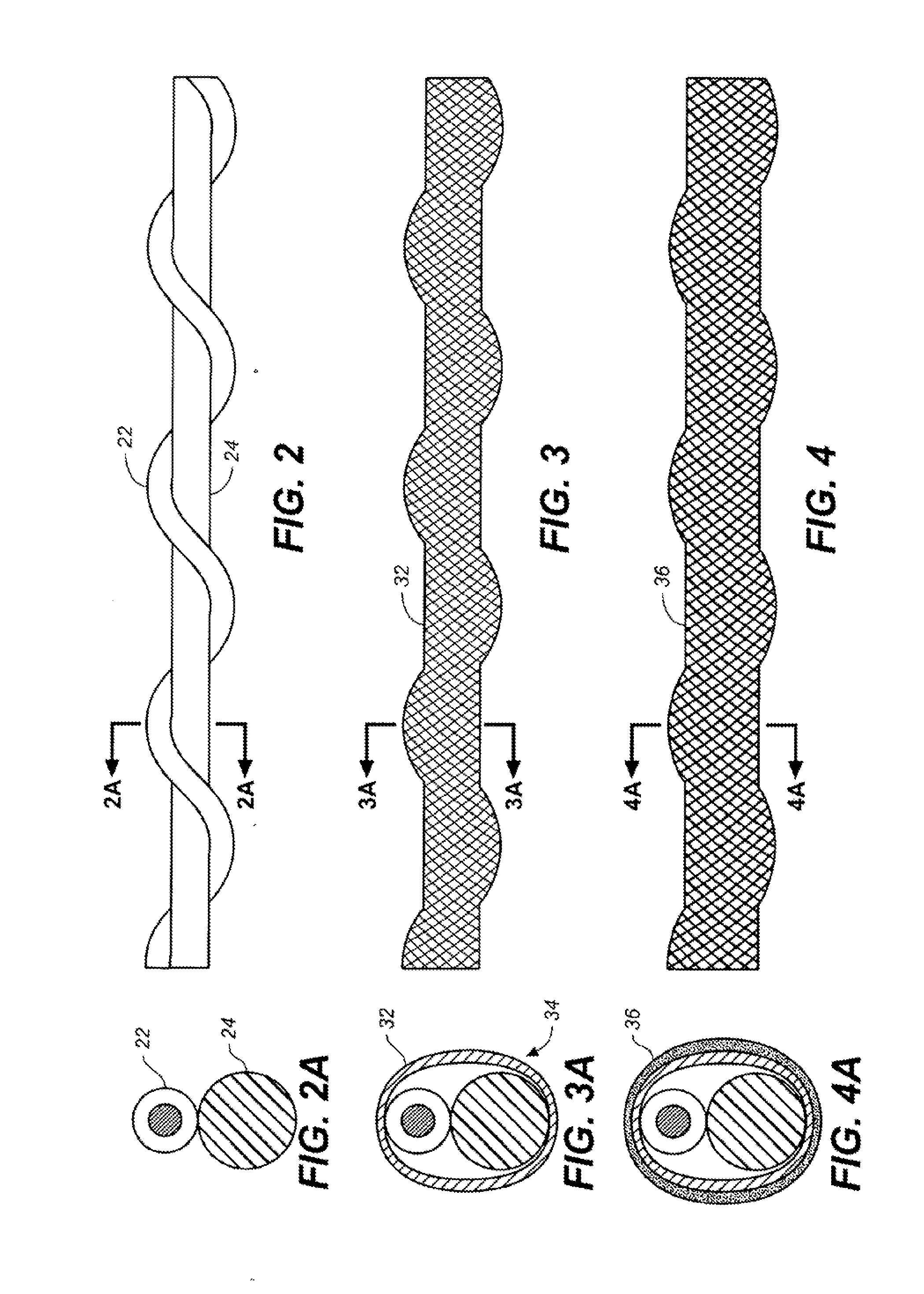Headline sonar cable
a headline sonar cable and headline technology, applied in the field of cables, can solve the problems of adversely affecting trawl operation and fishing gear's performance, increasing the likelihood of data signal conductor damage of headline sonar cable, and weight of conventional steel headline sonar cable, so as to reduce the power required, the effect of splicing is easy and fas
- Summary
- Abstract
- Description
- Claims
- Application Information
AI Technical Summary
Benefits of technology
Problems solved by technology
Method used
Image
Examples
Embodiment Construction
[0054]FIG. 1 illustrates a headline sonar cable in accordance with the present disclosure that is identified by the general reference character 20. FIG. 1 depicts a preferably insulated electrical conductor 22 wrapped around a rod 24 of deformable material and enclosed within a sequence of layers included in the particular embodiment of the headline sonar cable 20 illustrated in FIG. 1. The steps of a first fabrication method described below assemble the headline sonar cable 20 depicted in FIG. 1.
The First Fabrication Method
Step (1)
[0055]Fabrication of the headline sonar cable 20 depicted in FIG. 1 begins with twisting and / or wrapping the preferably insulated electrical conductor 22 around the rod 24 of deformable material as depicted in greater detail in FIGS. 2 and 2A. The deformable material of the rod 24 can be a thermoplastic material, a plastic material, or any other material that deforms when exposed to pressures generated while stretching various layers of the headline sonar...
PUM
| Property | Measurement | Unit |
|---|---|---|
| temperatures | aaaaa | aaaaa |
| temperatures | aaaaa | aaaaa |
| temperature | aaaaa | aaaaa |
Abstract
Description
Claims
Application Information
 Login to View More
Login to View More - R&D
- Intellectual Property
- Life Sciences
- Materials
- Tech Scout
- Unparalleled Data Quality
- Higher Quality Content
- 60% Fewer Hallucinations
Browse by: Latest US Patents, China's latest patents, Technical Efficacy Thesaurus, Application Domain, Technology Topic, Popular Technical Reports.
© 2025 PatSnap. All rights reserved.Legal|Privacy policy|Modern Slavery Act Transparency Statement|Sitemap|About US| Contact US: help@patsnap.com



